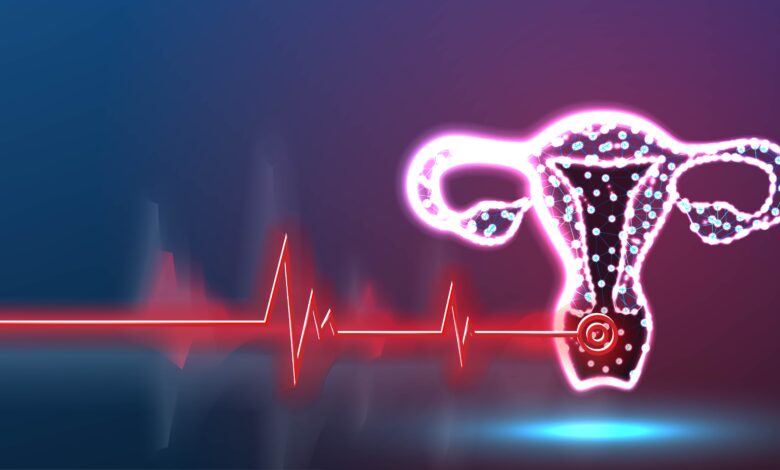
The PCOS Diet: A Step-by-Step Guide to Losing Weight and Feeling Your Best
Polycystic ovary syndrome, commonly known as PCOS, is an endocrine disorder seen in women of childbearing age. It is characterized by excess androgens (male hormones), irregular menstruation, or small cysts on the ovaries. Ovulation occurs when the ovary releases an egg so that the sperm can fertilize it. With PCOS, a woman cannot produce enough hormones to ovulate. Lack of ovulation can lead to cyst formation.
Step-By-Step Guide to Losing Weight and Feeling your Best
Reasons for PCOS
- Excess insulin production: Excess insulin levels in the body may enhance androgen production (a male hormone that is very low in females), causing ovulation difficulties.
- Excess androgen production: Excess androgen hormone synthesis by the ovaries can result in acne and hirsutism (hair growth on the face and body).
- Females with PCOS have low-grade inflammation, which produces an increase in androgen production, which can lead to blood vessel or heart problems.
- Women with PCOS have distinct genetic links.
Hormonal Imbalance in PCOS
Polycystic ovary syndrome (PCOS) is a hormonal disorder that affects approximately 10% of women of reproductive age and is one of the most common causes of infertility. PCOS is often associated with additional metabolic disorders and they can reinforce each other. Many women with PCOS are overweight, have a higher risk of type 2 diabetes or heart disease, and are more likely to experience mild health problems.
How to Balance Hormones Naturally in PCOS
- When compared to other foods including whole grains, legumes, nuts, seeds, fruits, and vegetables as well as a low-carb diet, a low-glycemic (GI) diet does not cause an immediate rise in insulin levels.
- Foods that are anti-inflammatory, such as fruits, fatty salmon, green leafy vegetables, and extra virgin olive oil, might lessen symptoms of the illness, like weariness. The Dietary Approach to Hypertension (DASH) diet aims to lessen the likelihood or effects of heart disease. It can also aid in reducing PCOS symptoms.
- The DASH diet is full of low-fat meals including fish, poultry, whole grains, fruits, and vegetables.
- Foods high in sugar and saturated fat are restricted on this diet.
- Changes in lifestyle are crucial for hormone balancing. Women with PCOS can benefit from regular exercise on their own. Yoga meditation and 30 minutes of consistent exercise each day can assist women with PCOS balance their hormones in addition to getting 7 to 8 hours of quality sleep each night.
Heavy Bleeding in PCOS
During their menstrual periods, women with PCOS may suffer greater bleeding. Menorrhagia is a disorder induced by the low progesterone levels associated with PCOS. Menorrhagia is defined by excessive bleeding that lasts 7 days or more. A normal period results in a blood loss of 40-40 ml. Menorrhagia causes women to throw up more than 80 ml of blood, and blood clots can form during pregnancy. Although heavy periods are common during pregnancy, they may indicate an underlying problem that should be examined.
Symptoms in PCOS
- Menstrual irregularity – periods may decrease or increase as a result of insufficient ovulation (ovulation).
- Amenorrhea (absence of periods) – some PCOS women do not menstruate for up to six years.
- Excessive growth of facial or body hair (or both)
- Acne
- Loss of hair on the scalp
- Reduced fertility (conceiving difficulties) – caused by infrequent or absent ovulation.
- Mood swings, such as anxiety and depression
- Obesity
- Apnea during sleep.
Exercise on a regular basis
Exercise has been shown to help people lose weight. Despite having less fat than non-PCOS women, exercise assisted women with PCOS in losing belly fat and improving insulin sensitivity.
- Exercise helps to maintain a healthy hormonal balance by raising endorphin levels while lowering estrogen and insulin levels.
- Enhances Mood – PCOS patients may experience a worsening of their depression due to hormone deficiencies and PCOS symptoms. Exercise frequently releases endorphins, or happy hormones.
- Help with weight loss – Losing weight can be challenging when you have PCOS. Doing the regular activities you enjoy and eating a nutritious diet will help you lose weight.
- Reduces the risk of diabetes – Exercise that is aerobic increases insulin sensitivity, which can help lower the chance of developing diabetes.
- Reduced risk of heart disease – Heart disease and high blood pressure are both serious risks for you. Your heart is kept healthy through exercise.
A Healthy Diet for PCOS
A personalized PCOS meal plan is designed to meet each individual’s unique nutritional needs, including factors such as dietary preferences, age, height, weight, and physical activity level.
- Follow seed cycling. The seed cycle is a drug designed to balance estrogen and progesterone.
- Start your day with a seed meal. Using this magnesium-rich flour can help regulate your menstrual cycle.
- Exercise regularly in the morning.
- Eat 15 minutes before you start your workout.
- Eat breakfast within 30 minutes of your workout to nourish your body and replenish your energy stores.
- Drink buttermilk or lemon water along with your breakfast snacks.
- Drink hibiscus tea as an evening snack. It helps balance hormones.
- Always eat raw vegetables 10 to 15 minutes before a large meal. It gives a feeling of satiety and helps prevent overeating.
- Do not eat heavy foods. So stick to the dimensions included in your plan.
- Try to go to bed before 11 am every night. This helps prevent extra calorie intake during sleep.
- Get at least 7 to 8 hours of sleep per day.
- Track your exercise regularly to see how your calories are burned.
- Reduce stress with gentle practices such as yoga and deep breathing.





